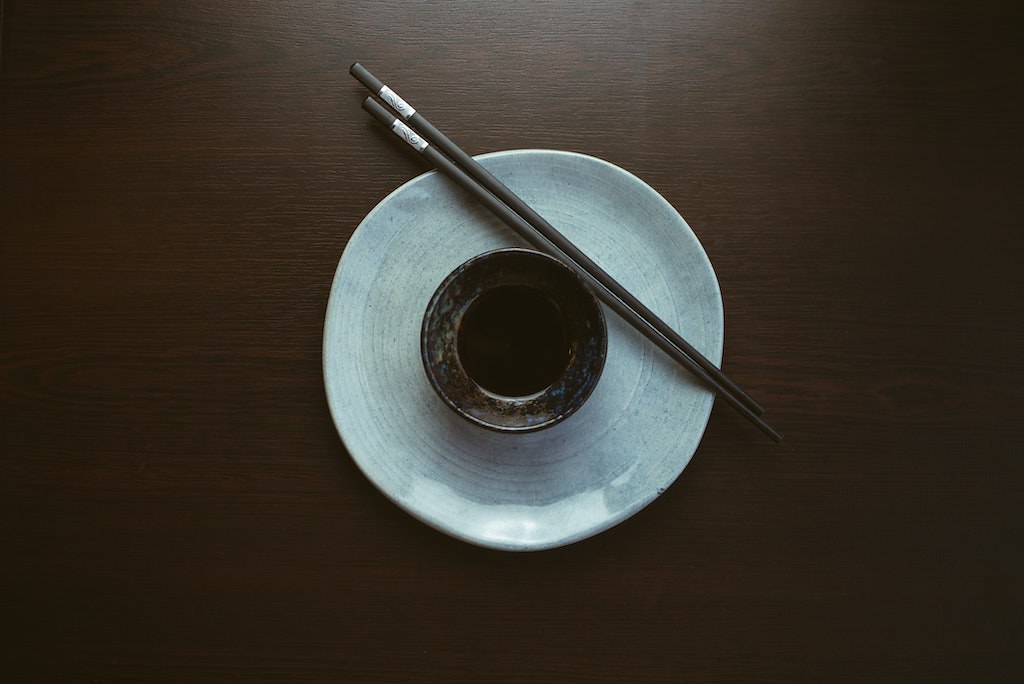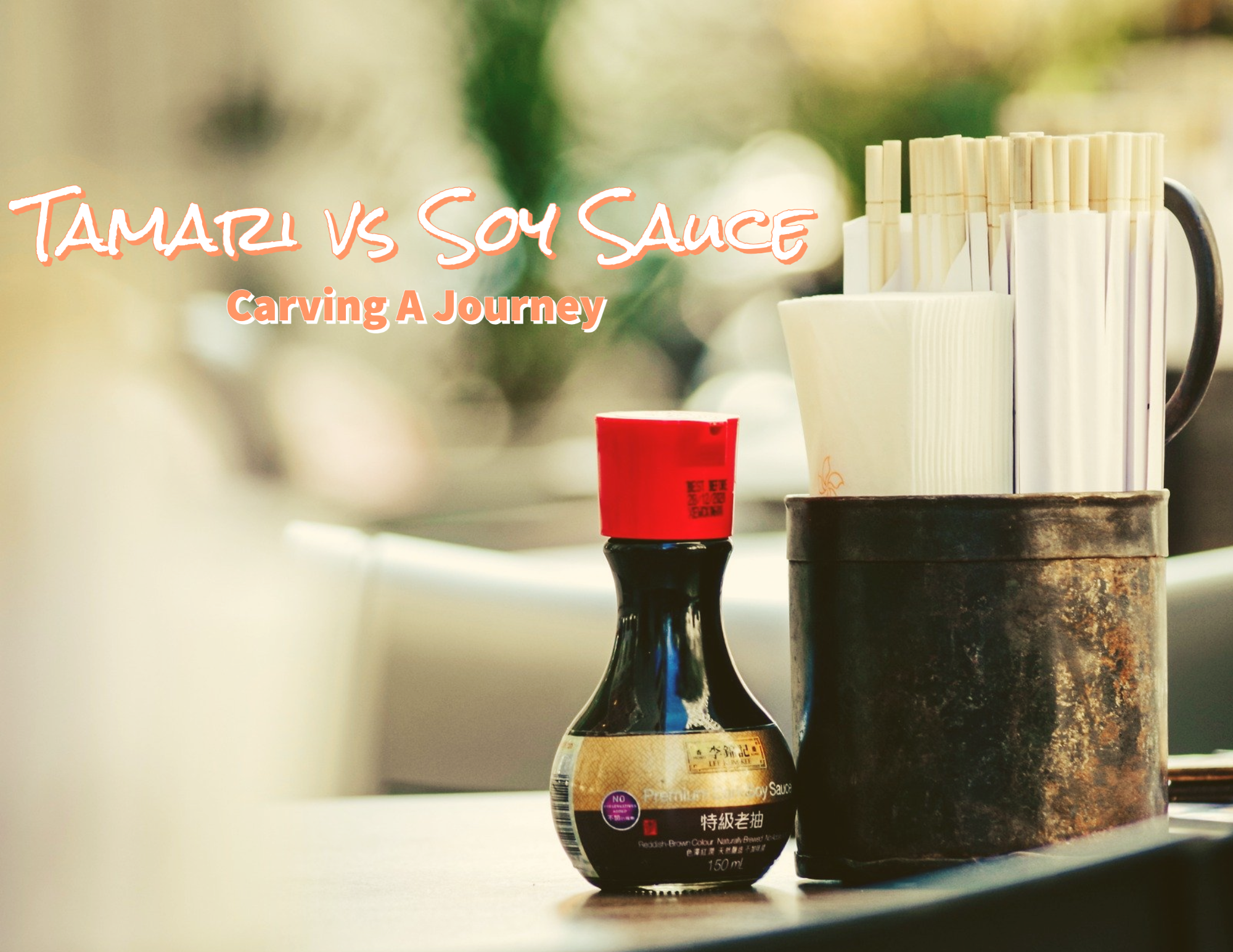Let’s take a moment to imagine a scenario. In this scenario, you are standing in the Asian section of the grocery store. On the shelves, there are rows and rows of different brands and styles of sauces. You pick up one of your many options for soy sauce and put it in your basket. Then, you decide to also try some tamari. Once you get home, you attempt to cook with the two sauces. Surprisingly, in your mind, they taste exactly the same. At this point, you find yourself completely confused about what makes these sauces different. So, tamari vs soy sauce: what exactly is the difference?
What Is Soy Sauce?
Soy sauce is a fermented liquid made from a mixture of soybeans and other ingredients. The sauce is used in cooking and as a condiment in many Asian cuisines.
Approximately 2,000 years ago, soy sauce was first invented in China. Through the years, the process for making soy sauce has not changed much. To make soy sauce, you mix together soybeans and roasted wheat. Then, you inject Aspergillus mold or koji* into the mixture. After letting the mixture sit for a few days, you add in water and salt, combining all the ingredients until they form a thick mash. Once the mash is formed, you place it into large vessels to ferment. The fermentation process can sometimes take two or more years before you can press, strain, and bottle your soy sauce.
*Koji: A mold used by the Japanese to make miso pastes and sake.

Tamari vs Soy Sauce: What Is the Difference?
Soy Sauce in Different Cultures:
Soy sauce is incredibly important in three East Asian cultures: The Chinese, Korean, and Japanese. Each culture has its own styles of sauce that they have adapted to fit their culture’s cuisine.
- In China, soy sauces first appeared during the Western Han Dynasty (206 BC-220 AD). Traditionally, they made soy sauces with 100% soy. Fully soy versions have a saltier and stronger flavor. Over time, the Chinese introduced wheat into the processing of soy sauce.
- In South and North Korea, soy sauce production started before the Three Kingdom (57 BC). In both Koreas, they differentiate their styles of soy sauces. The first style is known as ‘ganjang.’ This style was first introduced to Korea from Japan and is used for dipping sauces, stir-frying, and more. It is sweeter than the traditional Korean style. Then, Koreans have ‘guk ganjang’ which was the original Korean-invented soy sauce from the Three Kingdoms era. This version is much saltier and cleaner tasting. Koreans use this in soups.
- Soy sauce was first introduced to Japan in the 7th century when Buddhism came to Japan from China. Then, the Japanese started making their version using a mixture of soybeans and wheat. The Japanese version has sweeter notes to it compared to the Chinese counterparts. In Japan, people refer to soy sauce as Shoyu. The Japanese have two versions of shoyu: light (usukuchi) and dark (koikuchi).

Soy Sauce Is Rich in Salty and Pungent Flavors.
Famous Soy Sauce Brands Available in Grocery Stores:
- Koon Chun: This brand makes Chinese-style soy sauces. Koon Chun is made in Hong Kong using basic ingredients of soybean, salt, wheat, and water. They do not use additives.
- Pearl River Bridge: This brand makes Chinese-style soy sauces. Ingredients include soybeans, salt, wheat, and water. They do not use additives.
- Lee Kum Kee: This brand makes Chinese-style soy sauces. Note that they use additives to their sauces.
- Kikkoman: This brand makes Japanese ‘shoyu’ style soy sauces. Ingredients include water, wheat, soybeans, and salt.
- Yamasa: This brand makes Japanese ‘shoyu’ style soy sauce. Ingredients include water, soybeans, wheat, salt, alcohol, vinegar, and lactic acid.
Currently, Korean-style soy sauces are not as popular in the chain grocery stores in the United States (or other western countries). You can find many Korean soy sauce brands at your local Asian grocery store.
When picking out your soy sauce, always read the label! Many soy sauces use additives that make them taste good but are very unhealthy. Avoid soy sauces that include ingredients such as corn syrup and caramel coloring. Instead, we recommend buying brands that use only a few and natural ingredients such as water, salt, soy, and wheat.
What is Tamari?
Though it tastes similar to soy sauce, the history and production of tamari are quite different. Unlike soy sauce, tamari is a Japanese invention. This sauce originated as a by-product of making miso. On one hand, you make soy sauce by pressing and straining liquid from the fermented mixture of soybeans, wheat, and other grains. On the other hand, you make tamari using the leftover liquid removed from fermented miso paste.
Also, another main difference is the salt content. Tamari has an equally strong and bold flavor to soy sauce but tastes much less salty. A typical tablespoon of soy sauce contains approximately 900 mg of salt. On the other hand, a tablespoon of tamari contains 233 mg of salt.
Finally, the Japanese traditionally made tamari using only soybeans–making it a great option for those who are on a gluten-free diet.

Do You Eat Tamari, Soy Sauce, or Both?!
Famous Tamari Brands Available in Grocery Stores:
- San-J: This brand makes all-natural, non-GMO, and gluten-free tamari-based sauces. The ingredients include salt, soybeans, and water. Also, for those who desire to eat organic, they have organic options as well!
- Eden Foods: This brand has organic and non-organic options for Japanese tamari as well. Eden’s tamari does not contain any gluten. The ingredients include water, soybeans, salt, grain alcohol, and koji.
- Kikkoman: While Kikkoman is on the list for Japanese-style soy sauces, they also make the list for Japanese tamari. Their tamari typically does not contain any gluten. The ingredients include water, soybeans, salt, and sugar.
Though many tamari brands are naturally gluten-free, always read the label. There are tamari brands that do contain small amounts of wheat which can be harmful for those with celiac disease or a wheat allergy.
Tamari and Soy Sauce Alternative
For those who cannot eat soy, we recommend using coconut aminos. Though it doesn’t taste exactly the same, coconut aminos tastes very close to the real deal. This version is lighter and less salty than the typical soy sauce alternative. The sodium content is similar to that of tamari!
Ingredients for coconut aminos include coconut tree sap and salt.
Tamari vs Soy Sauce: What is the Difference?
Did you enjoy reading all about tamari vs soy sauce? If so, we would love to hear about it in the comment section below! If you would like to read a similar article, we recommend reading our article ‘Kimbap vs Sushi: What Is the Difference?‘.
In the end, if you have any questions or comments, you can also email us at [email protected]. And, finally, we would love to hear from you through our social media as well! You can follow us at @carvingajourney on Instagram, Twitter, Facebook, and Pinterest. Or, if you would like more articles like these, you can subscribe to our blog by joining our mailing list. We hope you enjoyed our tamari vs soy sauce article! Thank you so much for stopping by!
Carving A Journey is a participant in the Amazon Services LLC Associates Program, an affiliate advertising program designed to provide a means for sites to earn advertising fees by advertising and linking to Amazon.com. Although we may earn commissions for our endorsement, recommendation, testimonial, and/or link to any products or services from this website, these opinions are my own and I fully support these products.

